Hull York Medical School
United Kingdom

Hull York Medical School
United Kingdom
The study emphasizes the value of using an evidence-based approach when implementing new simulation technologies in education. It shows that both Virtual Patients and Virtual Reality interventions led to significant improvements in knowledge acquisition and retention, demonstrating their effectiveness as educational tools. Furthermore, participants responded positively to both methods, indicating a high level of acceptance and satisfaction with these innovative learning strategies.
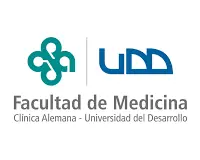
Universidad del Desarrollo
Chile
Virtual Patients have proven to be an effective tool for learning specific aspects of stroke management. Notably, both synchronous simulations with instructor-guided feedback and virtual simulations with automatic feedback have led to improved knowledge, with no significant differences between the two methods. This indicates that virtual simulation is a valuable addition to the undergraduate curriculum. It should be integrated into the curricular plans of medical schools to enhance future education.
As for students’ perceptions, most expressed satisfaction with the knowledge gained from the simulation and with the organization and implementation of the activity.
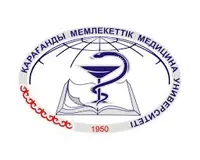
Karaganda Medical University
Kazakhstan
The outcomes showed that more than 80% of students noted a positive impact on the development of clinical skills in crisis situations. They reported feeling confident that working with a virtual patient helps improve clinical competence and develop decision-making skills for use in clinical practice. Additionally, the study mentions that virtual technologies, such as Body Interact, are the optimal solution for improving the quality of medical education within the framework of a clinical training program.

University of South-Eastern Norway
Norway
The findings of this study offer insights into the dialogic approaches and patterns employed by facilitators in virtual simulation teaching. Researchers discovered that facilitators promoted dialogue primarily through asking questions and active listening.

Universidad Andrés Bello
Chile
This study explored the impact of a clinical virtual simulator on the academic performance and guideline adherence of undergraduate medical students, comparing these outcomes with those of students engaged in small group discussions. Students using the simulator achieved higher OSCE scores and demonstrated quicker implementation of diagnostic and therapeutic interventions. Although the differences were not statistically significant, the authors suggest that the findings provide valuable insights that merit further investigation.

Moscow State Medical University
Russia
Virtual reality simulators hold significant and promising potential for use in medical training.
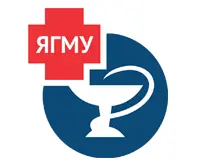
Yaroslavl State Medical University
Russia
Using the Body Interact Virtual Patients boosts students’ motivation and improves the acquisition of theoretical knowledge, practical skills, and abilities. It helps to develop a clear action plan for diagnosing and treating various diseases, thereby reducing risks for real patients. Additionally, it fosters clinical thinking and helps overcome uncertainty, ultimately enhancing the overall practical preparedness of pediatric graduates.

Escola Superior de Enfermagem do Porto
Portugal
The outcomes of this research highlighted the potential of clinical virtual simulation as a pedagogical strategy to capture students’ intrinsic motivation to develop active and optimized learning while potentiating their skills.
The research highlights the significance of educators and institutional leaders paying close attention to how students perceive the relevance of Virtual Patient simulation for learning and its enjoyability, and their own perceived effectiveness when engaging with clinical virtual simulation in the phases of conceptualization, design, and implementation.

Faculty of Medicine, Ankara University
Turkey
From the analysis of the data collected, the authors reached the following conclusions:
. Body Interact VP provides an opportunity to evaluate the different phases – e.g., data collection, diagnosis, and patient management – used in the clinical reasoning process, monitor changes in student performance, and provide feedback.
. The benefits of this experience were reported, including the activation of students’ prior knowledge, identification of knowledge deficits, and provision of opportunities for self-evaluation.
. The authors conclude the paper by suggesting 9 tips for educators based on the research findings.

Virtu-WIL project
Canada
The research findings revealed that:
. The majority of students found the virtual simulations engaging and beneficial for learning and preparing for clinical practice.
. When implemented with sound pedagogy and curriculum planning, virtual simulation proves to be an engaging and effective method for student preparation in clinical practice.
The authors suggest the need for further research into areas such as curriculum integration strategies and the timing/sequencing of Virtual Patients to optimize student preparedness for practice. Additionally, they propose that Virtual Patients could potentially reduce the need for in-person clinical hours required for practice readiness.

Facultad de Medicina, Universidad Nacional Autónoma de México
Mexico
The outcomes of the research indicate that Body Interact is perceived to be useful in supporting the teaching of medical students.
Students perceive an improvement in the individual learning process with the use of the Body Interact simulator, in addition, they consider that it is related to the pedagogical process of their learning, with the curricular contents, it provides an opportunity to put their knowledge into practice, thus, their expectations were exceeded, and they were perceived to be satisfied when using Body Interact. In addition, they perceived the development of
communication skills, decision making and critical thinking.

University of South-Eastern Norway
Norway
The students’ ratings of their learning experiences after the simulation activity showed a significant improvement in several aspects when compared with their ratings of their expectations for virtual simulation with Body Interact™ before the simulation activity. The researchers conclude that virtual simulation over Zoom can be useful for students’ learning. The students valued the feedback they received from both their peers and the faculty and considered it important to their learning. Virtual simulation is a useful pedagogical method that can be beneficial to implement in nursing education. Virtual simulation can also be used for teaching and evaluation during clinical rotation and in theoretical courses as a way of combining theoretical and practical knowledge. The virtual simulation helped students to bridge gaps in both the teaching and learning processes. The research identified four important aspects of learning: 1) learning by self-training, 2) learning from the software (Body Interact™), 3) learning from peers, and 4) learning from faculty.

Chinese University of Hong Kong
China
The use of virtual reality for learning over a period of 2 and 4 weeks may be beneficial for improving emergency medicine clinical competence for final-year medical students. A longer 4-week virtual patient simulation program may produce an even better learning effect on clinical competence.

University of South-Eastern Norway
Norway
The goal of this research was to systematically map existing research regarding the reflective feedback in virtual simulation in undergraduate nursing education. The research included 41 studies from 15 different countries.
The authors concluded that virtual simulation produced similar effects on learning as traditional simulation. Virtual simulation was well accepted by the students, and often preferred over traditional simulation. This review emphasizes the importance of reflective feedback
before, during, and after the simulation, and highlights the importance of reflective feedback led by the facilitator, showing also that virtual simulation provides opportunities to give feedback from the software, such as cues or direct feedback.

Universidad Católica del Norte
Chile
The goal of this research was to evaluate the effect of a remote virtual simulation program, synchronous with debriefing, for the initial management of stroke in fifth-year medical students.
Simulation, using Virtual Patients, applied in a deliberate practice program, with instructor-guided debriefing improved the competencies for the initial management of stroke in undergraduate medical students and was highly valued by the students.

Universidad del Noreste
Mexico
COVID-19 lockdowns presented itself as a major challenge to clinical education, and doctors-to-be final evaluation was no exception.
Body Interact provided a strategy to: assess clinical reasoning in a remote way; evaluate decision-making skills based on theoretical, scientific, epidemiological, and clinical knowledge; promoted feedback on actions.

University of Borås
Sweden
This study concluded that blended simulation-based education can increase nursing students’ critical thinking capabilities. As a result, this study builds on the use of simulation as a measure for developing and promoting critical thinking abilities during nursing education.

Anahuac University
Mexico
During the lockdowns due to the COVID-19 pandemic, Anáhuac developed a Virtual Hospital to provide students with clinical experience. Data from both pre-COVID-19 and Virtual Hospital rotations were compared and it was found that: training in a virtual hospital helped students not to lose their clinical ability; performing communication and general clinical skills can be maintained by the work done in rotations in the Virtual Hospital; combining VP with simulated patients boosted the communication skills development and promoted the development of both clinical reasoning and clinical gestures.

Zaporizhzhia State Medical University
Ukraine
The University’s experience in using the simulation interactive training system – Body Interact – allowed them to confirm the prospects of its use in interns’ certification. Its advantages include the possibility of task standardization; time limitation for solving the clinical situation; as well as having criteria for evaluating test results with detailed step-by-step reports.
The pilot experience of applying this system for interns’ certification can be expanded and used as the Structured Objective Clinical Examination (OSCE) stage for sixth-year students.

University of Health Sciences Turkey
Turkey
Virtual Patient Simulation (VPS) was indicated as superior to other methods in terms of nursing anxiety and self-confidence with clinical decision-making, and all the simulation-based learning and performance scores. When combining it with Human Patient Simulation, effectiveness was proved on the professional knowledge and communication sub-scales and the total score for simulation-based learning.
VPS can either be used as an online learning method or as an in-person strategy. Always promoting and highlighting its benefits towards patient safety.

Faculty of Medicine and Biomedical Sciences, University of Algarve
Portugal
Participants included 617 nursing and medical students from 11 institutions in 8 countries. At baseline, nursing students reported greater curricular integration and more clinical and simulation experience than did medical students. After exposure to small-group VPS training, participants reported significant improvements in 5/6 items relating to individual learning process and 7/7 items relating to curricular integration. The impact of the VPS experience was similar amongst nursing and medical students.
In this multi-centre study, perceptions of individual learning process and curricular integration improved after exposure to small-group VPS training. Nursing and medical students showed similar impact. Small-group VPS training is an accessible, low-risk educational strategy that can improve student perceptions of individual learning process and curricular integration

Shimane University
Japan
Previous studies have shown the pedagogical benefits of using virtual patient simulation (VPS), but there are no studies using simulators and VPS together, making learner satisfaction and learning effectiveness unknown.
This study investigated the satisfaction level of the educational program using both resources, concluding that education combining a simulator and VPS can facilitate the process from examination to diagnosis, and afford a high satisfaction level.
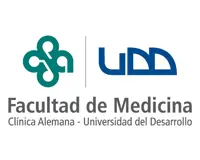
Facultad de Medicina – Clínica Alemana Universidad del Desarrollo
Chile
Language: Spanish
The researchers aimed to study the use of remote simulation and remote debriefing as a means to promote clinical reasoning in 6th-year medical students. A cross-sectional and descriptive study was conducted, and participants stated that the scenarios implemented in a remote way helped them to improve their capacity to clinically assess patients and make clinical decisions.
100% of students rated levels 5 and 4 to Body Interact as a relevant tool for individual learning and useful for theoretical classes.

University of South-Eastern Norway
Norway
This research aimed to explore the perspectives of students regarding the way in which a selection of digital learning resources (virtual patients, massive open online courses, and multimedia learning material) supports basic physical assessment skills development.
The set of learning tools used contributed to stimulating learning in 7 different ways and supports skills training and knowledge transfer between multiple learning contexts.

University of South-Eastern Norway
Norway
This study offers insight into how a technology-enhanced clinical course can foster the learning of fundamental nursing care, basic physical assessment skills, and clinical reasoning skills; enhancing students’ preparedness for clinical hours. Virtual patients’ scenarios contributed to integrating different types of knowledge and skills that are important when providing nursing care for patients in clinical practice. This study also highlighted a gap in pedagogical competence among faculty members with regard to facilitating learning in a technology-enhanced learning environment.

Guangxi Medical College
China
This article believes that the application of 3D virtual human-computer interaction teaching mode in clinical thinking training teaching in higher vocational colleges is the trend of clinical thinking teaching reform and development. Aiming at the development needs of the current situation of clinical thinking teaching mode for clinical medical students in higher vocational colleges, from the establishment of teaching teams, The establishment and application process of 3D virtual reality human-computer interaction technology teaching mode is discussed in three aspects: creating teaching mode and developing clinical thinking case, and provides reference for the teaching of clinical thinking ability of higher vocational medical students.

Faculty of Medicine and Biomedical Sciences, University of Algarve
Portugal
Virtual Patients are crosswise used as a valid tool to develop and train clinical reasoning and decision-making skills, both in Medicine and Nursing curriculums. Features and uses regarding the use of this type of simulation can be defined to foster the educational benefit, since a set of conditions, both in terms of quality and quantity, have been identified through students’ perceptions.

Faculty of Health Sciences, University of Beira Interior
Portugal
The mean final score of the participants was higher with the VIP compared to the MCQ.
Our investigation is favorable to the use of the VIP for the evaluation process of medical students in clinical years. A systematic review points out that the VIP proves to be more effective in improving clinical skills and knowledge.

Teikyo University
Japan
During the outbreaking phase, it may be hard for medical school students to learn COVID-19 cases in a clinical setting. Teikyo University provided a case of hybrid-simulation training for medical school students about these cases during the outbreak phase in Tokyo. In conclusion, the Community-Based Medical Education curriculum enabled medical students to understand the social determinants of health framework to some extent. Further work is needed to deepen their levels of reflection.

Escola Superior de Enfermagem do Porto
Portugal
The authors suggest that Virtual Patients appear to be a promising strategy for lifelong learning in the nursing context, having reached the following outcomes:

Escola Superior de Enfermagem do Porto
Portugal
ECare-COPD learning program showed usefulness and nurses’ intention to use this educational strategy in future and high average rates of perceived easiness and global quality. The MOOCs development opens a new era of opportunities for nursing education and to lifelong learning in nursing, enhancing safety and quality of the healthcare services in supporting patients to achieve a better quality of life.
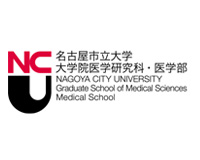
Nagoya City University
Japan
In response to COVID-19 pandemic, the Nagoya City University has decided to provide the “awareness training” using Body Interact. Students’ engagement has mirrored as if they were in the actual emergency room.
Reports have also confirmed their degree of understanding as well as the judgement pathway in their clinical decisions.

Showa University School
Japan
Due to the effects of COVID-19, the majority of medical education institutions throughout Japan stopped offering conventional classes and practical training for a certain period and have been forced to prepare the online education system.
In order to keep the medical students active who were unable to enter the campus or hospital environments to learn, Body Interact, virtual patient software, enabled them to continue learning how to diagnose and treat patients, with clinical scenarios available at any time and anywhere.
Students and medical instructors in and out of the University were highly satisfied with the system.

University of Insubria
Italy
During the COVID-19 pandemic, online medical training including simulated clinical scenarios avoided training interruption and the majority of participant students gave a positive response on the perceived quality of this training modality.

Shimane University
Japan
Body Interact could help medical students improve their clinical decision-making skills without lecturer supervision.
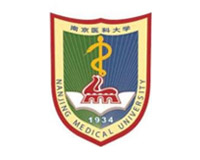
Nanjing Medical University
China
Students using Body Interact scored higher in earning value and sense of accomplishment, teaching enthusiasm, organizational clarity, and group interaction compared to a control group using only lectures as usual.

Universidad Nacional Autónoma de México
Mexico
Body Interact can be useful as:

Escola Superior de Enfermagem do Porto
Portugal
Students using Body Interact had significantly better outcomes in knowledge retention, clinical reasoning, and learning satisfaction than students in a control group who use a traditional low-fidelity simulator, both immediately but also two months after the intervention.
This study highlights the potential benefit of using virtual simulations over low-fidelity physical simulations.

George Brown College
Canada

Escola Superior de Enfermagem do Porto
Portugal

Rocky Vista University College of Osteopathic Medicine
United States of America

Cleveland Clinic
United States of America